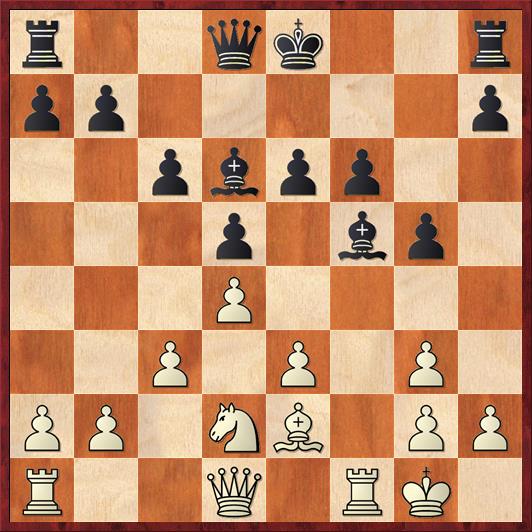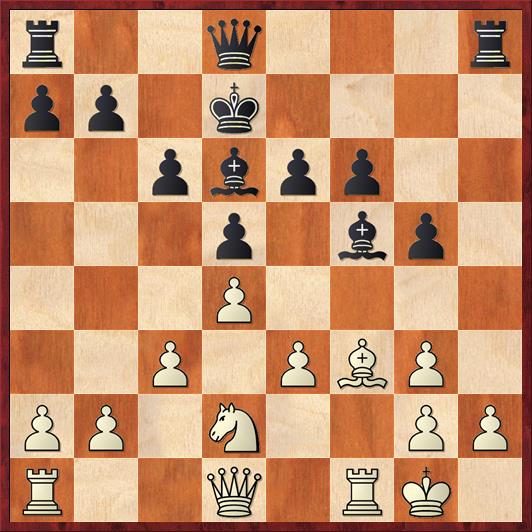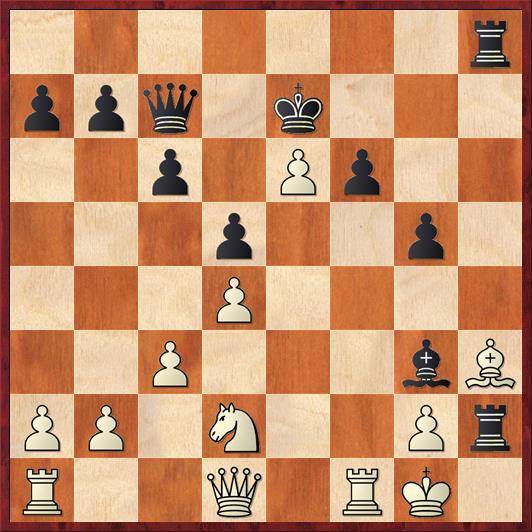At Mike Splane’s latest chess party this weekend, some of the usual faces were missing, including Gjon Feinstein, who had another commitment. Because he wasn’t there, I thought it would be a fun time to dust off the very first game I ever played against him.
The year is 1996. I had just moved to Santa Cruz earlier that summer, and found an active and fun chess scene. You could play any day at the Santa Cruz Coffee Roasting Company, and once a week there was a chess club at the Santa Cruz Operation (a dot-com era tech company that no longer exists). Every week at the SCO chess club we played three games at a 25-minute time control. There was a prize for finishing first in your eight-person section: a free pizza coupon. I won quite a bit of free pizza that year! Unfortunately, the promotion ended after a few months.
Gjon was an infrequent visitor to the club, but in December I finally got a chance to play against him. I was an underdog, because his rating was 2248 and mine was somewhere in the 2100s. Other than that, I knew essentially nothing about him and he probably knew nothing about me. It’s funny to think of us going into this game as complete strangers. The game is far from perfect, but it was exciting and I’d like to think that he enjoyed it too, in spite of the result!
Gjon Feinstein — Dana Mackenzie
SCO Chess Club, game/25
1. d4 Nf6 2. Nf3 d5 3. Bg5 Ne4 4. Bf4 c6 5. c3 Nd7 6. Nbd2 …
One thing I’ve come to admire about Gjon’s opening play is that he plays a million openings and is well-prepared in all of them. No matter what the opening, he always plays with an idea in mind.
When I showed this game at Mike’s party, he said that Gjon would play this opening differently today — he would probably play 6. Nfd2 instead, preparing 6. f3. I certainly would have been more confused over what to do next. After 6. Nbd2, the next few moves are straightforward development.
6. … Nf6 7. Nxe4 Nxe4 8. e3 Bf5 9. Be2 e6 10. O-O g5!
Okay, enough with the adult chess! Let’s get our hands dirty!
But leaving emotions out of the picture, I think from a rational point of view this move puts a finger on what White has done wrong in the opening. He has let my knight get too comfortable on e4. If, for example, White had played 9. Bd3 instead of 9. Be2, this move would be very dubious because of the answer 11. Bxe4.
There’s no question that the position becomes tenser after 10. … g5, and both of us make some nervous mistakes.
11. Be5?! f6 12. Bg3 Nxg3?! 13. fg?! Bd6 14. Nd2 …
Here comes a move that I really like. It kind of sums up my chess personality.
Position after 14. Nd2. Black to move.
FEN: r2qk2r/pp5p/2pbpp2/3p1bp1/3P4/2P1P1P1/PP1NB1PP/R2Q1RK1 b kq – 0 14
14. … h5!?
I was a little bit surprised that no one at Mike’s party suggested this move. To me, it comes from answering the Mike Splane Question: How am I going to win this game? Black wants to win by checkmating White on the h-file. In order to do that, I need White’s cooperation in opening the h-file. Sacrificing the h-pawn is a great way to do it.
I think most players, though, are reluctant to give away a pawn when it means losing a tempo with their king and losing the castling privilege. But for me it’s kind of normal, because it happens all the time in the King’s Gambit. Back then especially, my style in chess was leading with the chin: you hit me, I hit you back harder.
15. Bxh5+ Kd7 16. Bf3 …
This move is definitely open to criticism, but it is not exactly easy for White to decide what to do here. When I analyzed the game later, I wrote, “16. g4 may stymie Black’s attack, but it hems in the bishop at h5. If 16. Bg4, Black simply builds up his attack with 16. … Qe7 17. Rf2 or Re1 Qh7. If 16. Re1 immediately, 16. … Qg8 threatens 17. … g4 and leads to lines similar to the last one after the bishop retreats. Probably best is 16. Rxf5 ef 17. Bg6, winning two pawns for the exchange.”
Interestingly, the exchange sac 16. Rxf5 was the move that Mike Splane suggested, too. Rybka says that it’s about equal. It’s also interesting that no one ever came up with the move that Rybka likes best — neither player during the game thought of it, I didn’t think of it in my postgame analysis, and no one at the party thought of it. Rybka recommends 16. c4! with about a half-pawn edge to White. I won’t give any detailed analysis, but I think that our failure to even consider this move says something about human chess psychology. When we see our opponent brewing up an attack on the kingside, we tend to ask, “How can I defend it?” Only a really calm and clinical player would think of ignoring Black’s threats and counterattacking against Black’s king. For example, a computer would think this way.
Now we get to the key position of the game, which I would like to present to you in the style of Larry Evans’s old “What’s the Best Move?” column in Chess Life, where he would give you three options.
Position after 16. Bf3. Black to move.
FEN: r2q3r/pp1k4/2pbpp2/3p1bp1/3P4/2P1PBP1/PP1N2PP/R2Q1RK1 b – – 0 16
Here Black should play:
A) 16. … Qe7 B) 16. … Qc7 C) 16. … Rxh2.
(Space inserted in case you want to think about it.)
…
The correct answer is A. Let’s discuss them one at a time.
A) Even without doing any analysis, we should strongly suspect that A is better than B. It’s a general principle: If you want to checkmate your opponent, you need to put the queen in front of the bishop, not behind it. The difference becomes clear in a line like 16. … Qe7 17. e4 (as was played in the game) Qh7 18. ef Qxh2+ 19. Kf2 ef! This is a really nice move-order wrinkle found by Rybka: Black prepares to close the mating net on White’s king with 20. Qc2 Rae8! Notice that with the queen in front of the bishop, White cannot play 20. Rh1 because of 20. … Qxg3+ 21. Kg1 Rxh1+ followed by … Qh2 mate. Because this line is unplayable for White, he probably just needs to give back the pawn with 16. … Qe7 17. h3 Bxg3, but White’s king obviously remains in great danger.
B) This is the move I played in the game. I liked setting up the queen-bishop battery, but as discussed above, the queen is less powerful when it is hiding behind the bishop. Also, after 16. … Qc7? it is difficult for Black to transfer his queen to the h-file. So in effect, Black has gone all in on the queen-bishop battery. With move A, I retain the flexibility to set up either the queen-rook battery on the h-file, or the queen-bishop battery on the b8-h2 diagonal. I wrote in my notebook after the game: “Moral — When attacking, place pieces in the most flexible positions, where they have more possible threats.”
C) When I presented this game at the chess party, I was caught unprepared when everyone wanted to sac the rook on h2! And it seemed sound: After 16. … Rxh2 17. Kxh2 Qh8+ 18. Bh5? g4! the bishop is toast (although White might try to hang on with 19. Rxf5 ef 20. Nf1 Qxh5+ 21. Kg1). However, we missed the move order 18. Kg1! Bxg3 19. Bh5! There are two stunning points to this move. First, if 19. … Bg6 20. Qg4! removes the bishop from g3 before Black can checkmate. Second, if 19. … g4 20. Rxf5! is now much stronger than it was a move earlier. After 20. … ef 21. Nf1 Black again loses a tempo because of the attack on his bishop. And after 21. … Bd6 22. Bg6! White’s bishop stunningly escapes from behind enemy lines, because Black cannot defend the f5-pawn! White is completely winning here; Rybka gives him a more than 2-pawn advantage.
The moral here is that chess parties are fun, but you can’t always trust group analysis. A second moral is that in highly tactical positions, you really need to be careful to consider each possible move order. And a third moral is, as a defender, look for ways to return part or all of the sacrificed material, and look for ways to disrupt the timing of the opponent’s attack.
Now let’s see what happened in the game.
16. … Qc7? 17. e4! …
Correct, and a very principled, Gjon Feinstein-like move. One thing I like about his style is that he always fights for the initiative.
17. … Rxh2?!?
According to my notes, this was a stone-cold bluff! I did not think that the rook sacrifice actually works.
This is very interesting in light of my previous post, where I said that there is no room for bluffing in chess. This may be one of the only times in my chess career where I have admitted to committing this sin.
Why did I play this move? Well, first, this is a 25-minute game and it is an unrated game. I am willing to take a little bit more of a “just-for-fun” attitude to such a game. Also, in all likelihood we were both down to 5 minutes or less at this point. And White is under much more pressure than Black, which makes it hard for him to come up with the right decisions.
And that is really the intent of 17. … Rxh2: to sow confusion in the enemy camp. There’s a good principle here: when your opponent attacks one of your pieces, it’s sometimes a surprisingly good strategy to put another piece en prise. He won’t expect it, and he can’t capture both.
Finally, although the computer agrees that 17. … Rxh2 is unsound, it’s not quite as cut-and-dried as my comment suggests. The computer says that the best followup for both sides is 17. … Rxh2 18. Kxh2 Bxg3+ 19. Kg1 Bh2+ 20. Kf2 Bg6 21. Ke2 f5! 22. ef ef 23. Qc2 Re8+ 24. Kd1 Qg3 and it’s still not 100 percent over. The move … g5-g4 is coming, and White can’t stop it.
18. ef? …
Gjon takes the wrong piece, and now I am back in business. More than “back in business,” in fact I’m winning.
I wonder if there is a psychological ingredient behind Gjon’s blunder. He wants to take the piece that he attacked, not the piece that I gave him. Are masters immune to such emotional judgments? I think not.
18. … Bxg3 19. fe+ Ke7
Another of Mike Splane’s favorite concepts is the “traitor pawn.” Here, the pawn on e6 helps Black rather than White.
20. Bg4 …
I wrote in my notebook after the game, “The only improvement for White was 20. Bh5 Rah8 21. Qf3 Rh6! 22. Rd1 R2xh5 23. Kf1 f5! and Black wins.” All 100 percent correct according to the computer!
20. … Rah8 21. Bh3 …
Position after 21. Bh3. Black to move.
FEN: 7r/ppq1k3/2p1Pp2/3p2p1/3P4/2P3bB/PP1N2Pr/R2Q1RK1 b – – 0 21
It’s Black to play and win. The first move is not so hard, I think, but you need to see the second move too.
21. … R8xh3! 22. gh Bf2+! White resigns.
What a game! I guarantee that there were no dry armpits when we were done.
Gjon was very gracious in defeat, and he commended me for my Tal-like play. Maybe this was what got our friendship off to a good start. Another player might have sulked and said that I just got lucky, and he should have taken the rook instead of the bishop. I have always noticed that Gjon is less concerned about the outcome of a game than the truths behind it.
In that spirit, there are lots of lessons in this game. Let me recapitulate:
- Remember the Mike Splane Question.
- Turn your “traitor pawns” into “hero pawns” by sacrificing them. (See 14. … h5!, where I gave away the pawn that would otherwise get in the way of my attack on the h-file.)
- Queen behind the bishop is check. Queen in front of the bishop is checkmate.
- When attacking, position your pieces with maximum flexibility. Choose a variation that gives you two possible plans over a variation that gives you only one.
- Fight for the initiative at all times. Don’t let your opponent dictate the agenda. (See 16. c4, 17. e4, and 17. … Rxh2.)
- When your opponent threatens one piece, consider offering another piece. You’re acting just like Monty Hall on the game show Let’s Make a Deal. You’re asking your opponent, “Would you like the piece that you’re already attacking, or can I interest you in taking this other piece?” Remember, he can’t take both, and by giving him more choices you make it harder for him to choose correctly. Perhaps we can call this the Monty Hall Principle.
- In highly tactical positions move order is incredibly important, and you should consider each possible move order even if it feels “unnatural.” Very often that unnatural move order turns out to be the right one.





